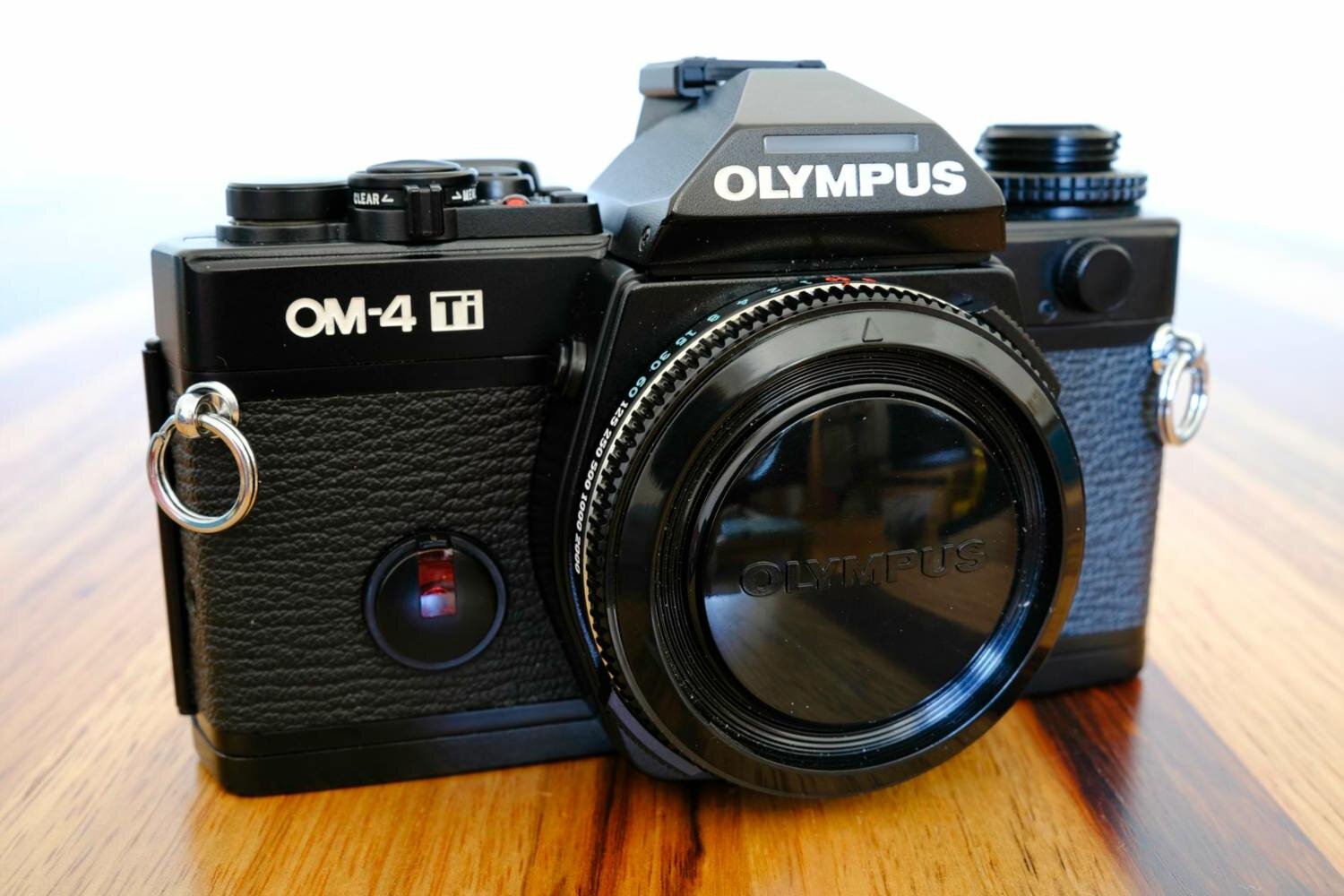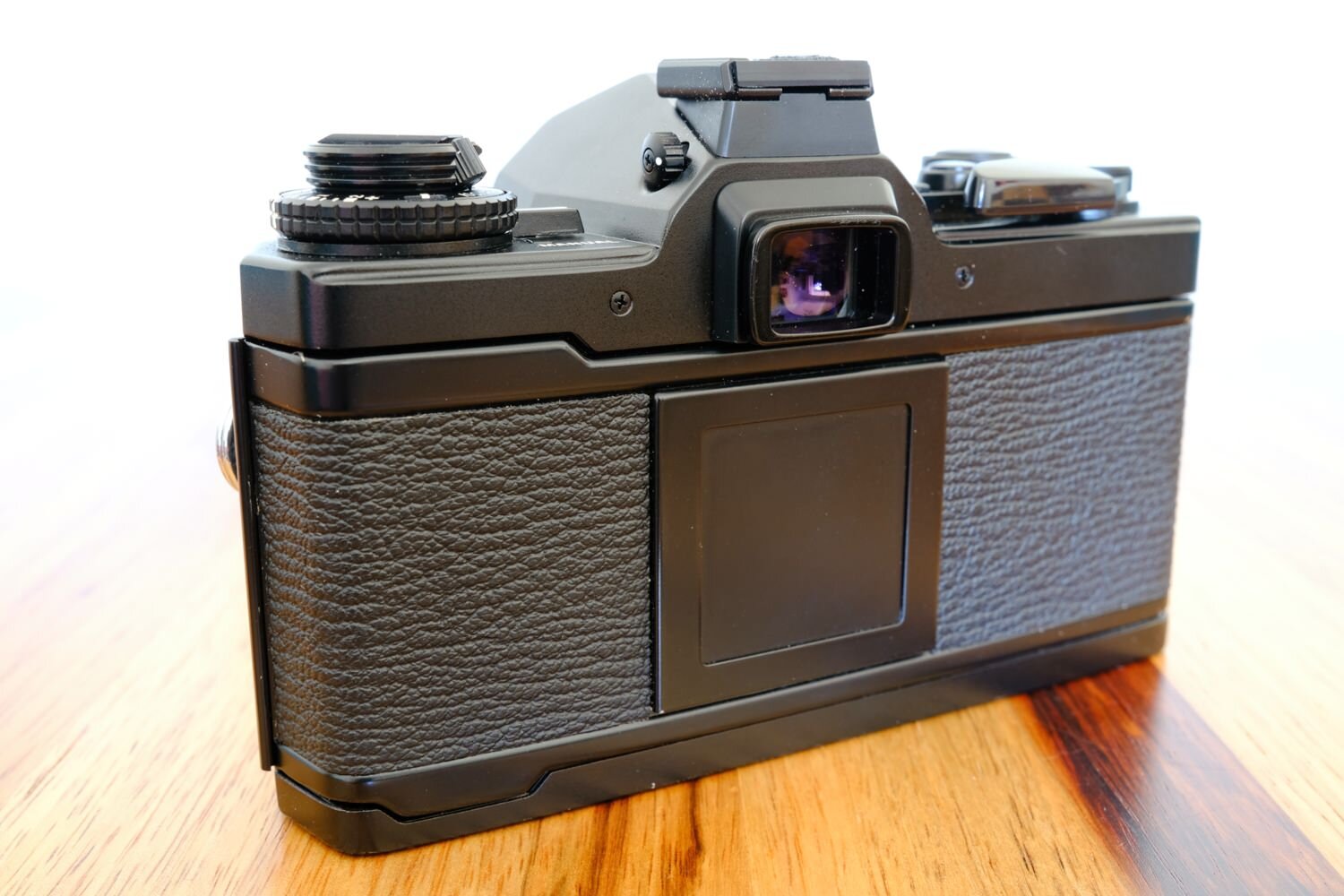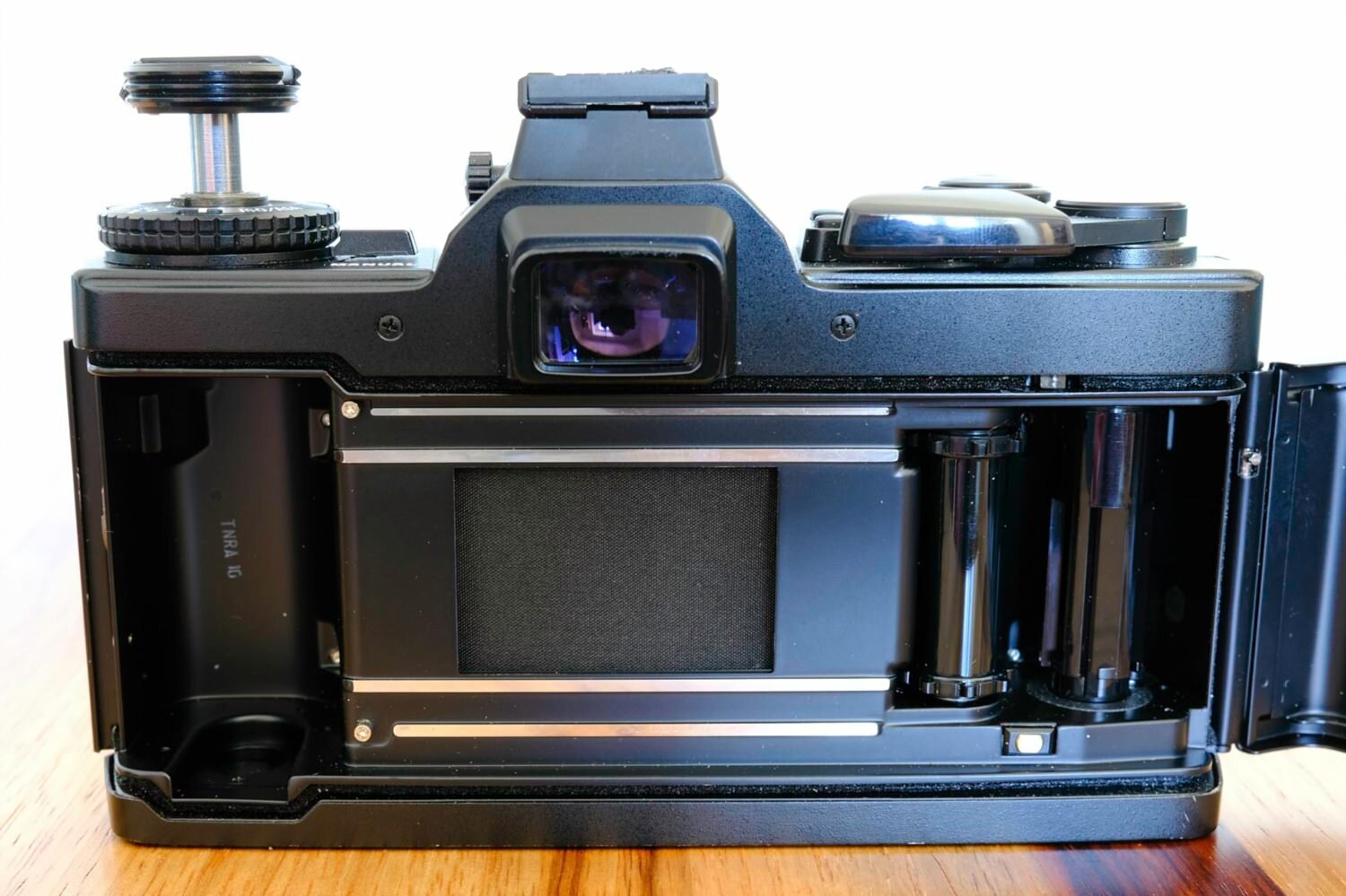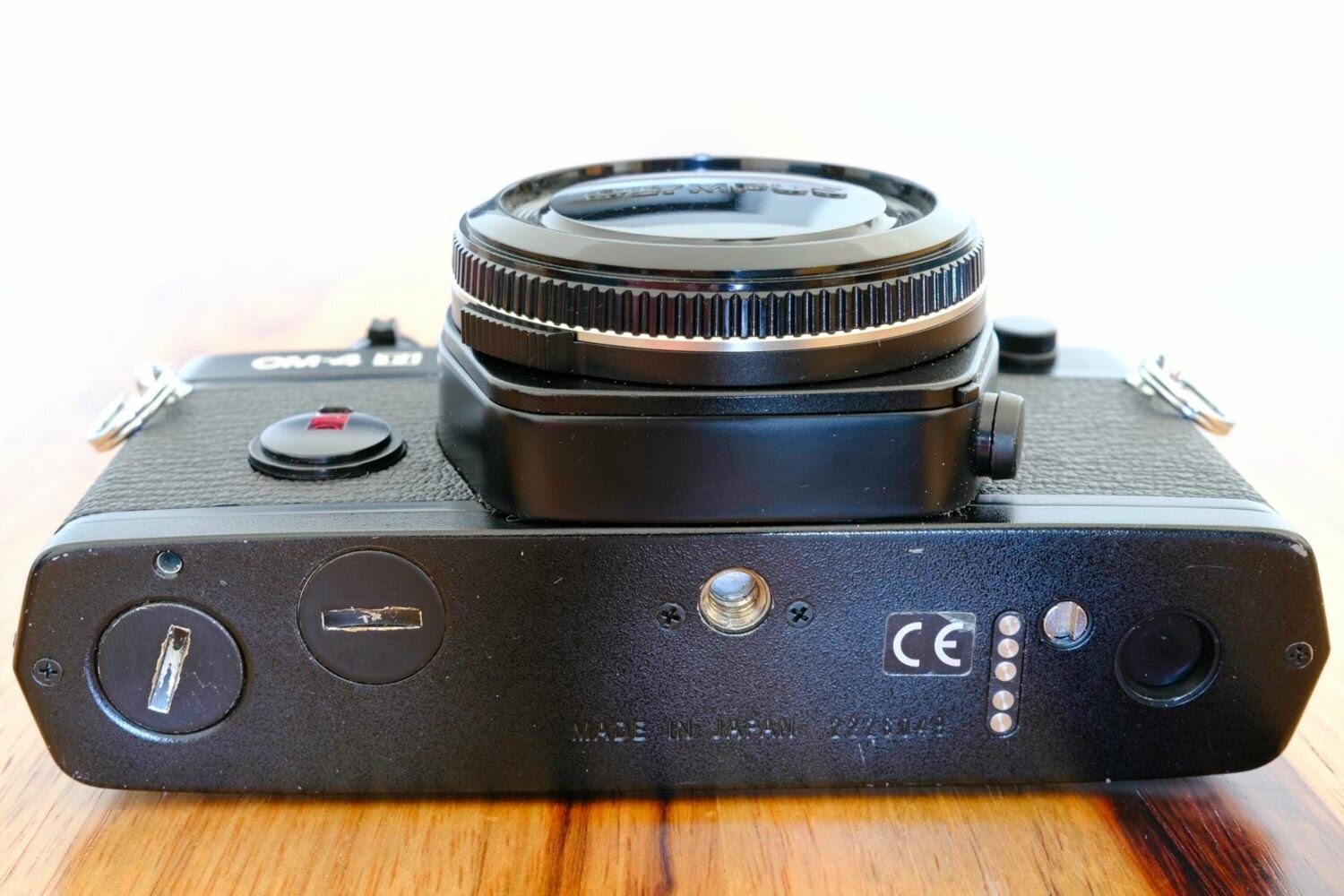Olympus OM-4 Ti
Introduction
Introduced in 1987, the Olympus OM-4 Ti is the top-of-the line SLR in the Olympus OM lineup. It was produced until 2002, when Olympus officially discontinued the OM-mount in favour of the digital FourThirds mount.
Although the Olympus OM-4 Ti is not the last Olympus OM model introduced, that would be the OM-3Ti, it is the most sophisticated electronic one.
Yes, I’m only talking about the single-digit “real” OMs, not the other crazy abominations Olympus conjured up in between.
It is also the only Olympus camera to be featured in a James Bond Intro (Licence To Kill, 1989). Well, I could stop reviewing right there, because if it is good enough for a double-0 agent, then…
Olympus OM-4 Ti
Review
The Olympus OM-4 Ti is a fully electronic controlled SLR for 35mm film. It was designed as a camera for professional photographers as well as high-end amateurs and is therefore fully compatible with the whole Olympus OM ecosystem.
Here are some of its noteworthy features:
Manual focus
powered by two LR44 batteries
Viewfinder coverage 97%
Built-in diopter correction
Fastest shutter speed 1/2000
Mechanical shutter 1/60 or bulb
Flash sync up to 1/2000 (with the Olympus F280 flash)
Sophisticated computer-supported multi-spot metering system
Titanium top and bottom plate
The OM-4 Ti’s back features a metal film type reminder.
Build Quality, Design & Reliability
In general, the body is well made and feels durable enough to satisfy professional needs. Some of the controls feel like weak spots. Especially the plasticy self-timer is not really confidence-inducing, but I have yet to see an OM-4Ti where this control element actually broke.
Electronic-wise it offers the same functions as the OM-4. It seems though that the OM-4 Ti does not drain the batteries as much as the OM-4 does when not in use.
The electronics are built to a very high standard, but once they fail you’ll need a repair tech who is not afraid to re-solder circuit boards.
The finder features a LCD-display. If it breaks you are out of luck unless you find a donor camera or just live with the fact that not every shutter speed is displayed properly. At least it won’t prevent the camera from taking pictures.
Olympus OM-4 Ti film chamber with cloth shutter.
User Experience
Like all OM-cameras, the OM-4 Ti features a compact form factor while not compromising the usability. If you are already familiar with Olympus cameras, you’ll feel right at home. This streamlined user experience is a great advantage when using the OM system.However, there are some outstanding features only found in the OM-4 (Ti).
Olympus OM-4 Ti - the bottom plate features (from left to right) the battery compartment, the winder socket, tripod socket and electronic contacts for coupling the winder.
Exposure Modes
The camera can be shot in aperture priority or full manual. In aperture priority the the shutter speeds are adjusted stepless. Once you run out of batteries, you can still use the mechanical backup times of 1/60 or bulb.
Exposure Metering
Besides the standard center-weighted average metering, the OM-4 (Ti) offers a unique spot metering system. It can be used as a regular spot meter, but is also capable of storing up to 8 separate spot meter readings and average them out.
There are many great things about this. It is a very precise and flexible way of determining the proper exposure, especially as the OM-4 (Ti) will adjust the shutter speed not only in full stops, but electronically select the correct shutter speeds in between. Although not as fast/convenient as matrix metering, it is far more adaptable and precise. The shutter speed scale in the viewfinder also displays the spot meter readings currently stored and the readings are adjusted accordingly when you change the aperture.
Apart from that, there is a dedicated “Highlight” and “Shadow” button which is designed to take a spot meter reading of a white or black part of the scene and adjust the exposure accordingly. It works perfectly.
What I really like about exposure metering in general is the seamless experience. Once you press the “spot” button on the top plate, the camera takes a reading and sticks with it until you clear the memory by flicking a little switch below the shutter button labeled “clear”. It then reverts to center-weighted average.
Olympus OM-4 Ti top view
Left side: exposure compensation dial combined with film speed settings (lift & lock)
Right side: electronic control panel for spot metering
Viewfinder
Like in all single-digit OM-cameras, the viewfinder is nice and bright. I never had issues focusing, even in dim lighting conditions. As the exposure metering scale is located below the viewfinder image, there is nothing that distracts you when composing an image.
There are various interchangeable matte screens available, which can be quite pricey depending on availability.
Accessories
Here are some accessories I found quite useful.
The Olympus Winder 2 is very handy for portrait sessions as you don’t have to rewind every single frame. It is powered by four standard AA batteries.
When travelling, the Olympus leather case offers the camera and your prime lens great protection. You can just put it in your backpack without worrying.
The Olympus Recordata Back 4 imprints a variety of information into the picture frame. Document your life the old school way!
Verdict
The Olympus OM-4 Ti is a little bit hyped currently - which is understandable, as it is a very capable camera. Small form factor, access to some of the best 35mm lenses ever made and the relative affordability (~280 € in 2020) make it a compelling choice.
Before buying one of these cameras, I would consider whether you really need / would use the features it offers. Otherwise I recommend getting the more serviceable and still excellent OM-1 or OM-2 models, which do everything except spot metering and 1/2000 shutter speed - at half the price.
I think the unique features of the OM-4 (Ti) are very useful for landscape or macro shooters who use low speed films and with a thorough and precise workflow.
When shooting street photography, travel or other documentary-like genres, I never used these features. So I ended up selling my mint OM-4 Ti and I don’t really miss it.







